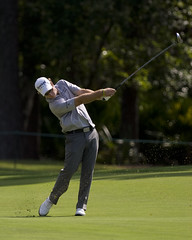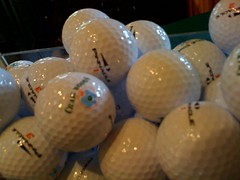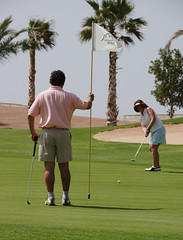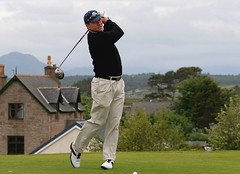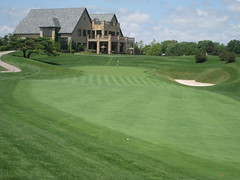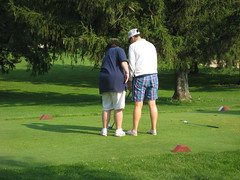Strategies On The Lesson Tee
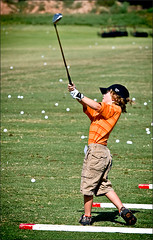 Photo by robotographyBy John Savage
USGTF Level IV Member and Course Examiner, Langhorne, Pennsylvania
There are a lot of unspoken expectations when a student first comes to you for a lesson. The student sees you as the golf professional, teacher, and expert. How you use your expertise is very important in developing success for your teaching profession.
Students expect that people who have developed expertise in particular areas (such as the golf swing) are, by definition, able to think effectively about problems in those areas. Understanding expertise is important because it provides insights into the nature of thinking and problem solving. Research shows that it is not simply a series of general abilities, such as memory, intelligence, or the use of general strategies, that differentiate experts from novices. Instead, experts have acquired extensive knowledge which is influenced by what they notice and how they organize, represent, and interpret information in their environment. This in turn, affects their abilities to remember, reason, and solve problems.
Expertise in a particular area does not guarantee that one is good at helping others learn it. Expertise can sometimes hurt teaching because many experts forget what is easy and what is difficult for the students.
The idea that golf teaching professionals observe features and patterns that are not recognized by novices is potentially important for developing observational skills. The beginning teacher will normally focus on the outcome of the swing movement, and not on how the action is being performed. The experienced professional will direct his attention towards a systematic approach to solving the movement problem.
GOLF INSTRUCTORS:
have varying levels of flexibility in their approach to new situations;
organize the information in ways that reflect an understanding of the subject matter;
are aware that knowledge reflects contexts of applicability;
can flexibly retrieve important aspects of their knowledge with little intentional effort;
observe movements and patterns not recognized by the non-professional.
Some students seem naturally enthusiastic about learning, but many need and expect their instructors to inspire, challenge, and stimulate them. Effective learning during a lesson depends on the teacher’s ability to sustain the interest that brought the student there in the first place. Whatever level of motivation your student brings to the lesson tee will be transformed, for better or worse, by what happens during the lesson.
Unfortunately, there is no single magic formula for motivating students. Many factors affect a given student’s motivation to work and learn: interest in the subject matter, perception of its usefulness, general desire to achieve, self-confidence and self esteem, as well as patience and persistence. Here are some things you can do to help students maintain their level of motivation to improve:
give frequent, early, positive feedback that supports their belief that they can do well;
assign tasks that are neither too easy nor too difficult;
help students find personal meaning and value in the information given;
create an atmosphere that is open and positive. Ask for and get feedback;
involve students in discussion techniques. This fosters retention. Using only lecture techniques inhibits learning to a great degree.
It is very important to make an effort to get the student to think during the lesson. For playing effectiveness, help everyone to think for themselves – while learning and when practicing. Get them to think about what they do. The student will always spend more time practicing or playing than they will spend with you on the lesson tee.
To promote thought, you must embrace silence. Allocate time for the student during the intervals between hitting and reflection. As the student collects the information given, they primarily use two sensory tools: visual and kinesthetic. They should be able to tell you what it feels like to them.
Ask how they interpret the information given. What does the information mean to them? Sometimes, a correction on one side of the body affects a movement on the opposite side. Ask, “What did you feel as you moved through the ball?” The flight of the ball is immediate feedback to the student. Use your knowledge of the ball flight laws as an asset. Help the student analyze your plan for their improvement.
Nothing you do should be a big change. Think of it as an upgrade rather than a complete change. Upgrading the total lesson experience means identifying which part of their stroke is underperforming. Fix that part of their swing, and stay with the correction until the student can perform the movement correctly.
Before you make a modification, try some self-reflection. How would you, as a player, correct the movement error? What swing mechanics would you use that are similar to the student’s? Through your interpretation, how would you get them to think about what they need to do? The amount of information a person can attend to at any one time is limited, and the information given should be based on the level of competence of the player.
Use the art of questioning much more frequently than lecturing when teaching.
Reinforce that you care about their progress. Near the end of a lesson, say something like this: “I’m available for a few extra minutes. Do you have time?”
If they have not signed up for a series of lessons, as you shake their hand and thank them for the lesson, add, “Next time I see you, provided I have that opportunity, we will help you with…”
Photo by robotographyBy John Savage
USGTF Level IV Member and Course Examiner, Langhorne, Pennsylvania
There are a lot of unspoken expectations when a student first comes to you for a lesson. The student sees you as the golf professional, teacher, and expert. How you use your expertise is very important in developing success for your teaching profession.
Students expect that people who have developed expertise in particular areas (such as the golf swing) are, by definition, able to think effectively about problems in those areas. Understanding expertise is important because it provides insights into the nature of thinking and problem solving. Research shows that it is not simply a series of general abilities, such as memory, intelligence, or the use of general strategies, that differentiate experts from novices. Instead, experts have acquired extensive knowledge which is influenced by what they notice and how they organize, represent, and interpret information in their environment. This in turn, affects their abilities to remember, reason, and solve problems.
Expertise in a particular area does not guarantee that one is good at helping others learn it. Expertise can sometimes hurt teaching because many experts forget what is easy and what is difficult for the students.
The idea that golf teaching professionals observe features and patterns that are not recognized by novices is potentially important for developing observational skills. The beginning teacher will normally focus on the outcome of the swing movement, and not on how the action is being performed. The experienced professional will direct his attention towards a systematic approach to solving the movement problem.
GOLF INSTRUCTORS:
have varying levels of flexibility in their approach to new situations;
organize the information in ways that reflect an understanding of the subject matter;
are aware that knowledge reflects contexts of applicability;
can flexibly retrieve important aspects of their knowledge with little intentional effort;
observe movements and patterns not recognized by the non-professional.
Some students seem naturally enthusiastic about learning, but many need and expect their instructors to inspire, challenge, and stimulate them. Effective learning during a lesson depends on the teacher’s ability to sustain the interest that brought the student there in the first place. Whatever level of motivation your student brings to the lesson tee will be transformed, for better or worse, by what happens during the lesson.
Unfortunately, there is no single magic formula for motivating students. Many factors affect a given student’s motivation to work and learn: interest in the subject matter, perception of its usefulness, general desire to achieve, self-confidence and self esteem, as well as patience and persistence. Here are some things you can do to help students maintain their level of motivation to improve:
give frequent, early, positive feedback that supports their belief that they can do well;
assign tasks that are neither too easy nor too difficult;
help students find personal meaning and value in the information given;
create an atmosphere that is open and positive. Ask for and get feedback;
involve students in discussion techniques. This fosters retention. Using only lecture techniques inhibits learning to a great degree.
It is very important to make an effort to get the student to think during the lesson. For playing effectiveness, help everyone to think for themselves – while learning and when practicing. Get them to think about what they do. The student will always spend more time practicing or playing than they will spend with you on the lesson tee.
To promote thought, you must embrace silence. Allocate time for the student during the intervals between hitting and reflection. As the student collects the information given, they primarily use two sensory tools: visual and kinesthetic. They should be able to tell you what it feels like to them.
Ask how they interpret the information given. What does the information mean to them? Sometimes, a correction on one side of the body affects a movement on the opposite side. Ask, “What did you feel as you moved through the ball?” The flight of the ball is immediate feedback to the student. Use your knowledge of the ball flight laws as an asset. Help the student analyze your plan for their improvement.
Nothing you do should be a big change. Think of it as an upgrade rather than a complete change. Upgrading the total lesson experience means identifying which part of their stroke is underperforming. Fix that part of their swing, and stay with the correction until the student can perform the movement correctly.
Before you make a modification, try some self-reflection. How would you, as a player, correct the movement error? What swing mechanics would you use that are similar to the student’s? Through your interpretation, how would you get them to think about what they need to do? The amount of information a person can attend to at any one time is limited, and the information given should be based on the level of competence of the player.
Use the art of questioning much more frequently than lecturing when teaching.
Reinforce that you care about their progress. Near the end of a lesson, say something like this: “I’m available for a few extra minutes. Do you have time?”
If they have not signed up for a series of lessons, as you shake their hand and thank them for the lesson, add, “Next time I see you, provided I have that opportunity, we will help you with…”


